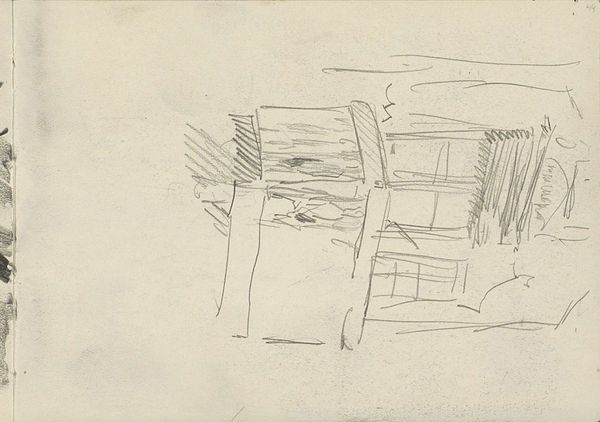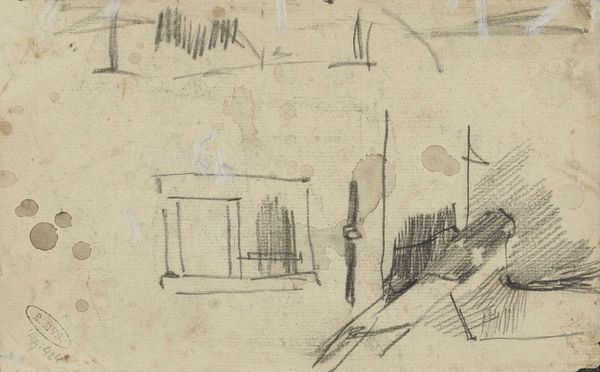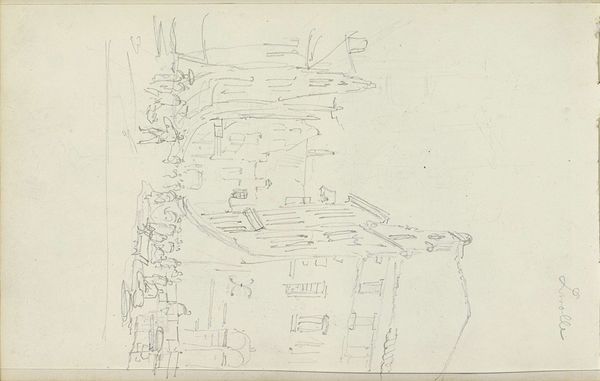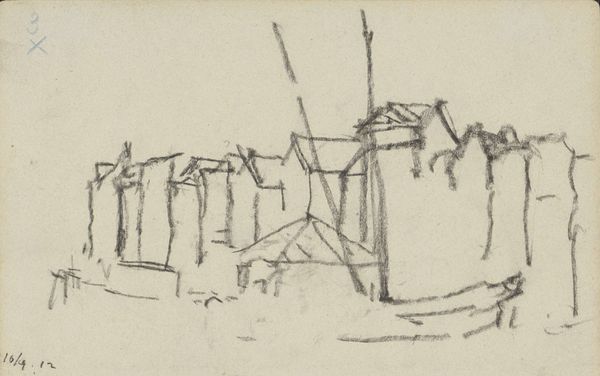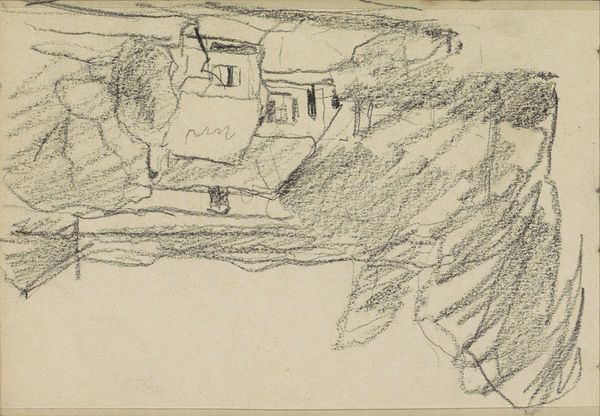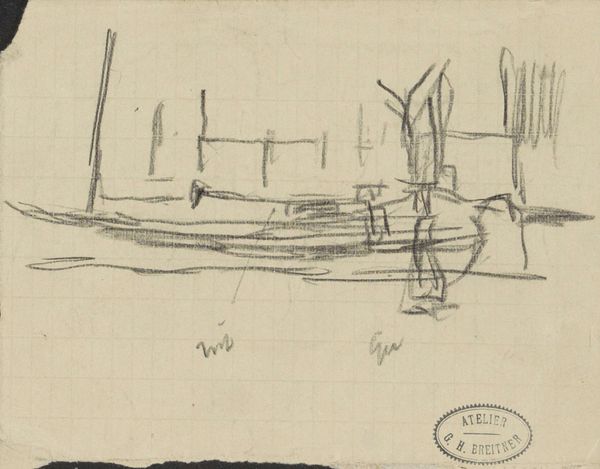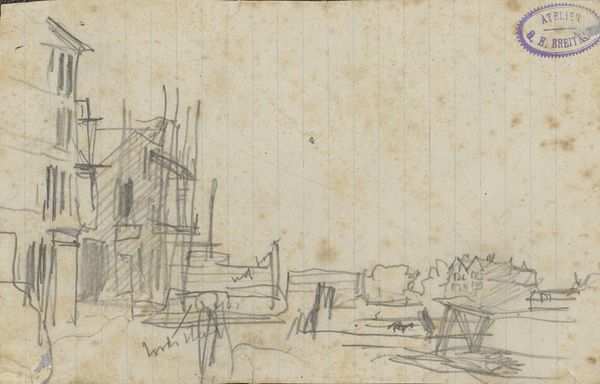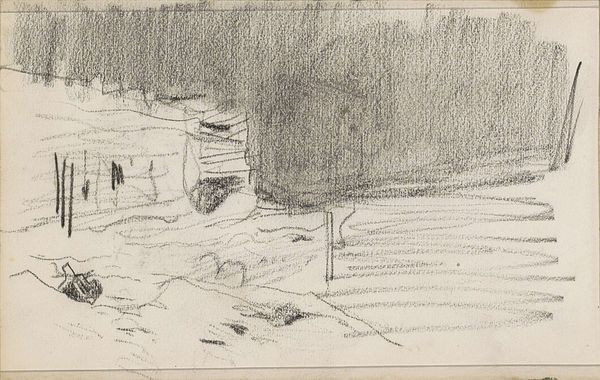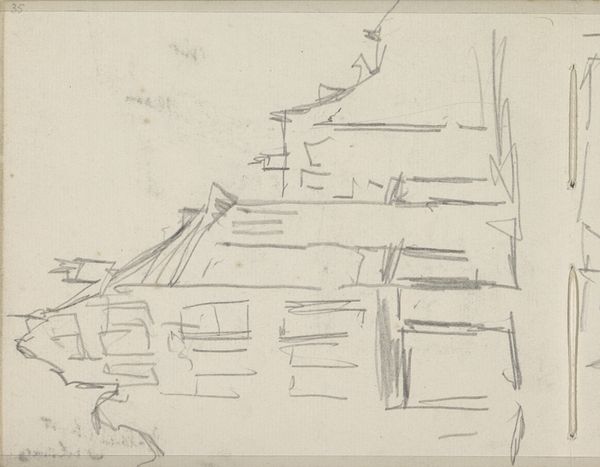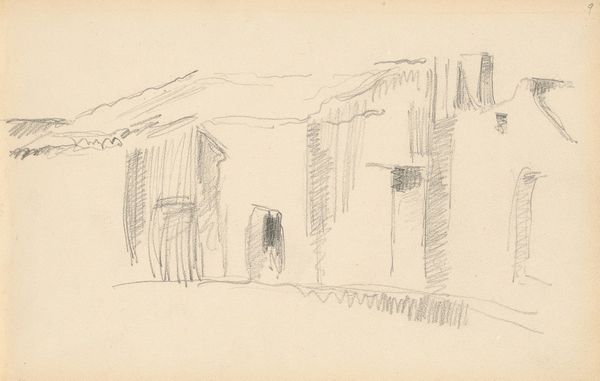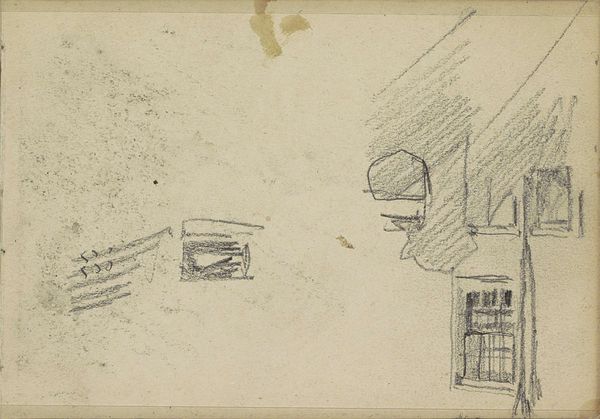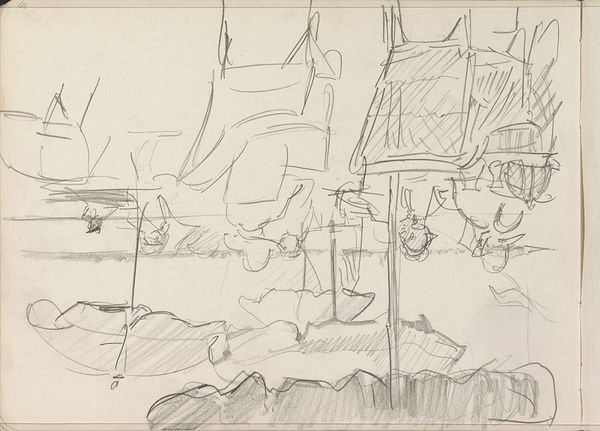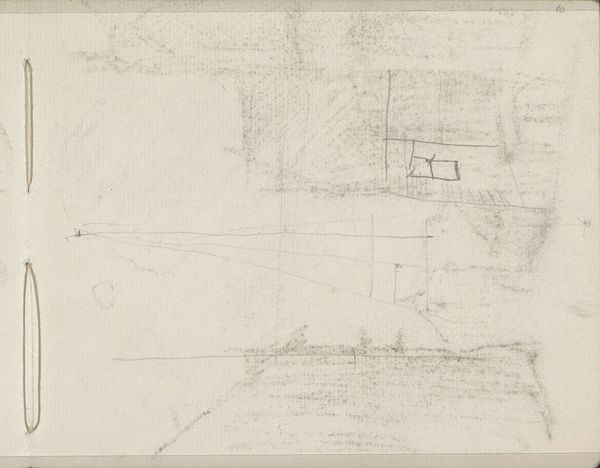
Rokin te Amsterdam, gezien vanuit kunstenaarsvereniging Arti et Amicitiae 1898
0:00
0:00
Dimensions: height 167 mm, width 260 mm
Copyright: Rijks Museum: Open Domain
Curator: Here we have George Hendrik Breitner’s 1898 pencil drawing, “Rokin in Amsterdam, seen from the Arti et Amicitiae." It depicts a view of the Rokin, one of Amsterdam’s central canals, seen from the vantage point of the artist's society. Editor: My first thought is how transient and fleeting it feels! There's such raw energy captured in these seemingly hurried lines. You can almost feel the artist wanting to fix this impression before it vanished. Curator: Indeed! This drawing offers insight into the speed of change sweeping through Amsterdam at the time. The trams and buildings represent more than just infrastructure; they're embodiments of industrial advancement reshaping the city. Look at the tram cars and note how much space they consume relative to the figures, dwarfed as they are by these emerging technologies. Editor: I see how the use of pencil rather than charcoal lends a lighter feel, emphasizing ephemerality and making us think about temporality. It suggests the modern, constantly evolving experience of urban life. But how does that fit within the context of artists using 'lesser' media? Curator: Breitner likely chose pencil precisely because it was perceived as less formal, faster – better suited to capture an evolving urban landscape. It moves away from established hierarchies of value, questioning traditional notions of 'high art' by placing emphasis on capturing raw lived experiences accessible to all. His subjects are everyday, the media common; and these factors allow for a democratic rendering of the streets and lives lived upon them. Editor: That is fascinating, so the artistic choice mirrors the accessibility of subject and rendering style, collapsing that division between traditional art making and modern life! For me, it speaks about challenging conventional beauty through the formal presentation of everyday realities. This isn't some picturesque scene. It’s about acknowledging, even elevating, the industrial and commercial transformations that are very palpable in his time and are defining urban Amsterdam. Curator: Exactly! We observe how the material of the pencil and sketch itself becomes interwoven within this broader context of late nineteenth-century production—art, after all, always emerging within an environment of resources, tools, and ideologies. Editor: Absolutely! A final reflection on Breitner's choice of perspective here – the view from his association's building offers an insight not just into artistic vision, but access—who had the means, both material and cultural, to observe these streets as society continued onward into modernity? Curator: Well put! Examining his position in place and society gives an even richer understanding of Breitner's compelling cityscape.
Comments
No comments
Be the first to comment and join the conversation on the ultimate creative platform.
